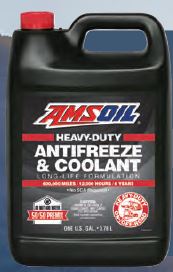A SIMPLE WAY TO FIGHT CYLINDER-LINER CAVITATION In extreme cases, cylinder-liner cavitation in diesels can allow oil and coolant to mix. Then it’s just a matter of time until engine failure. Here’s what you can do to help ensure that doesn’t happen. Most diesel engines are designed with replaceable cast-iron cylinder liners that are pressed […]
You are browsing archives for
Category: Tech Articles
Engine start-stop technology – Major Wea
Engine start-stop technology can increase bearing wear Use only the best quality oil in these engines as the crankshaft needs to float. Even the “so called synthetics” don’t dampen the metal to metal issues mentioned below nearly as well as AMSOIL and you can tell due to the reduction in vibration or more consistent oil […]
Ask AMSOIL: Should I Use Racing Oil in m...
I Drive Aggressive: Is Racing Oil a better choice for my Daily Driver? Motorists who are passionate about engine protection and performance can easily succumb to the following line of reasoning: 1) Racing engines are more severe than my engine. 2) Racing engines use racing oil. 3) Therefore, I should use racing oil in my […]
Small engine won’t start? Identifying th
Small engine won’t start? Bad gas is the number-one reason, and here’s how to prevent it. Len Groom | TECHNICAL PRODUCT MANAGER, POWERSPORTS In northern Minnesota, where I live, the temperature occasionally breaks 80ºF (27ºC) in the summer. When it does, it’s time to fire up my Jet-Skis* and hit the lake. The last thing […]



